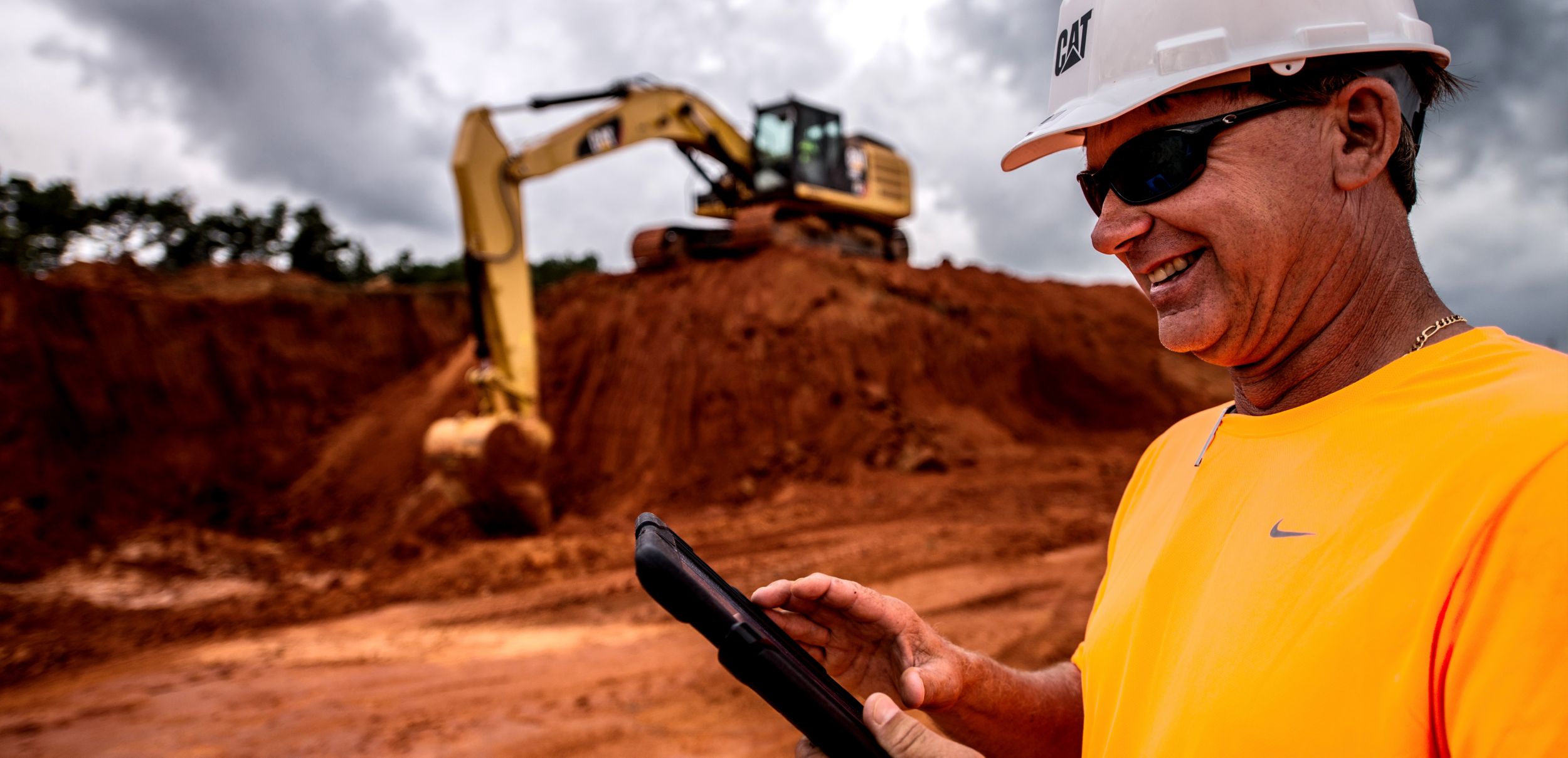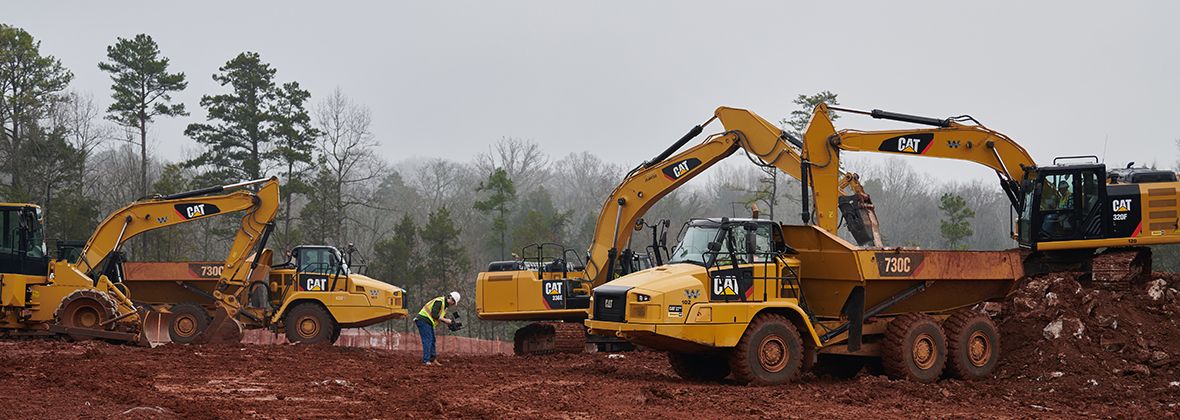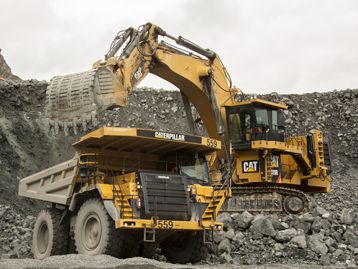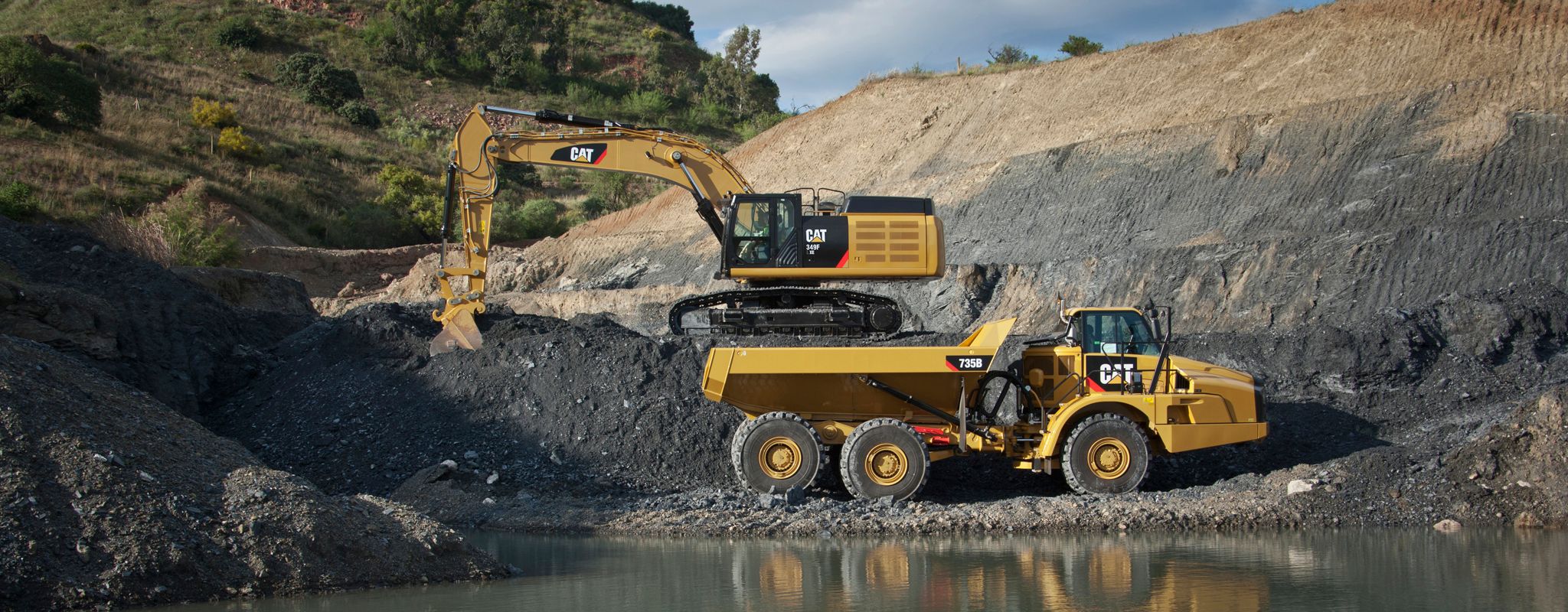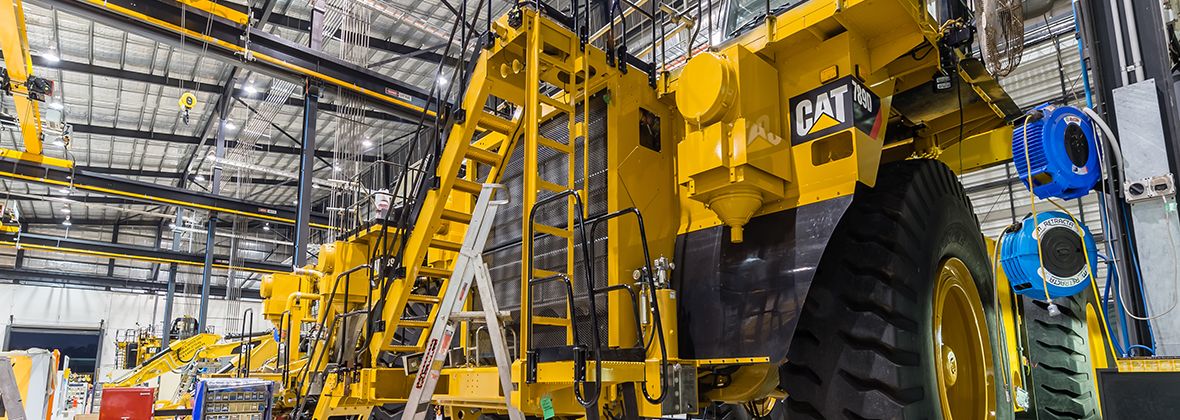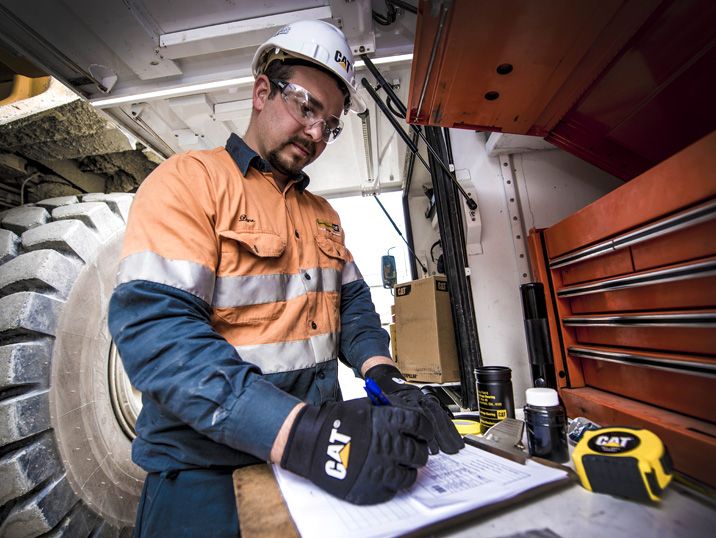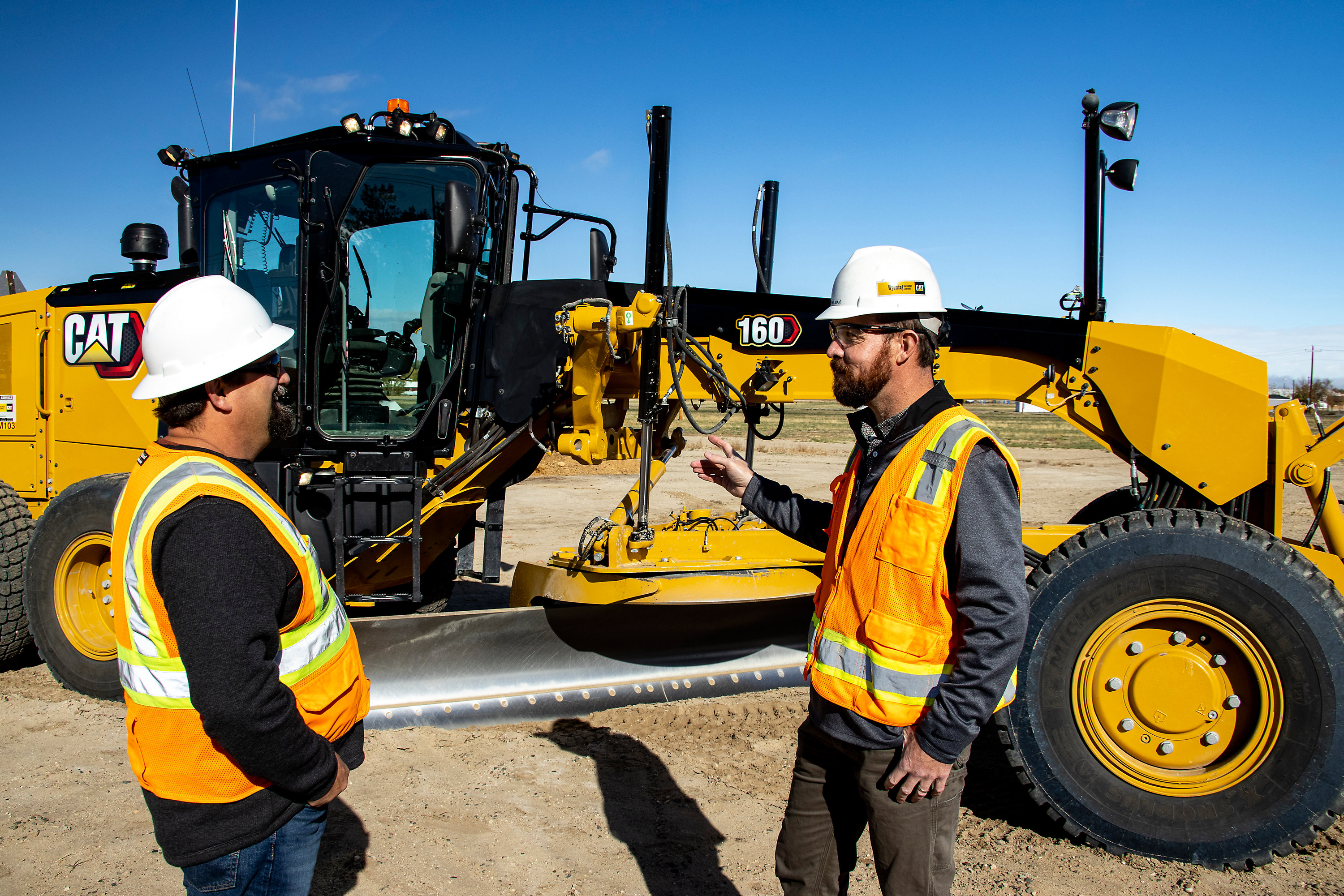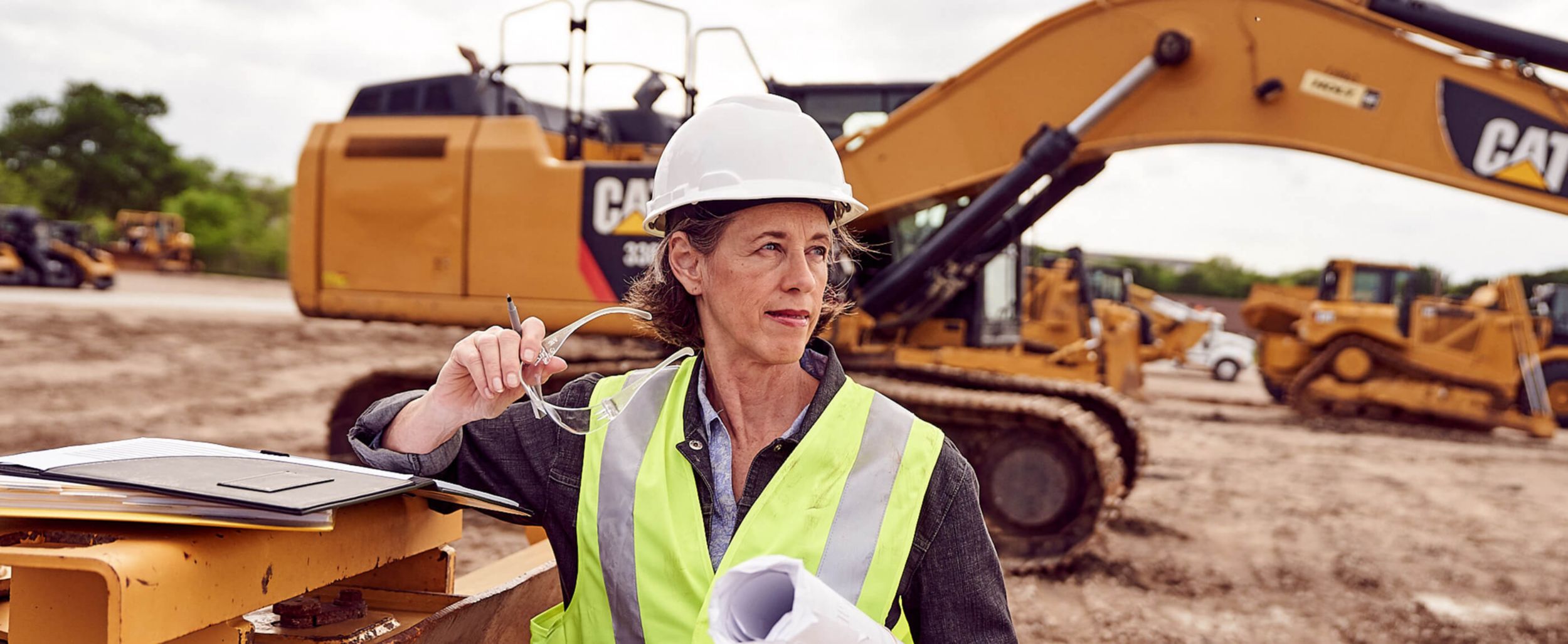If you already have an existing account with another Cat App, you can use the same account to sign in here.
One Account. All of Cat.
Your Caterpillar account is the single account you use to log in to select services and applications we offer. Shop for parts and machines online, manage your fleet, go mobile, and more.
Account Information
Site Settings
Security
Advice for Business Legacy Planning
LEGACY PLANNING IS A VITAL CONSIDERATION FOR YOUR BUSINESS—WHETHER YOU PLAN TO RETIRE IN A FEW YEARS OR A FEW DECADES.
Turning your company into a legacy, be it for the next generation of your family or your most trusted employees, requires a significant amount of planning and strategy. How can you ensure your business continues after you retire from the working world? Use these pieces of advice as a foundation:
START PLANNING EARLY
Your business's legacy is the result of many years of work, and planning for the transition to the next owner requires a similarly long timeframe. As Entrepreneur pointed out, it's hard to start making a conscious, lasting impact on your enterprise and positively influence the new owners once you're already near your targeted retirement date. Your legacy starts with your first day on the job and builds up until you choose to leave your position and enjoy the fruits of your labor.
While more planning will take place once you make a decision about the future of your organization, it's important to start planning early and recording important information about your role in places besides your own memory. Keep notes of what has and hasn't worked well for your company, best practices for engaging with specific clients and vendors, thoughts about the state of your industry and more. As your retirement draws nearer, spend time with your successors and start sharing this type of knowledge face to face.
HAVE TRUSTED STAFF HELP BRIDGE THE TRANSITION
Everyone's careers last for different lengths of time, which means you will have some trusted staff in the prime of their working years as you approach retirement. You'll naturally identify long-term employees as your business continues to evolve and grow, and all but the smallest companies will have at least one or two prized staff members who can fill this role.
Discuss the importance of succession planning with them and make it clear you believe they can play a valuable role in maintaining the success of your company. As your retirement date draws closer, you can start holding specific discussions about the transition and their role in it. These employees will be vital in helping a new company leader reach into the bank of organizational experience and make informed decisions going forward.
DEVELOP A STRONG FINANCIAL BALANCE SHEET
Leadership transitions are always a complicated period for businesses, even when they are planned far in advance. A new decision-maker has to put his or her own mark on the company and make choices as they see fit. This time means adjustment for everyone involved, which is why it's critical that finances are stable and reliable going into the changeover. Avoid major, unnecessary expenses and purchases when the time for a leadership transition starts to draw near, and consider more fiscally manageable options, like financing or leasing equipment.
A captive finance company provides businesses with attractive options for leasing and financing equipment, an option that helps maintain stability in the face of a leadership transition. Talk to your local dealer or finance representative for more information.
Additional Articles
Find in-depth articles to answer your questions about construction equipment financing, and expert tips to help you navigate today's economy as a successful business.
-
How to Deal with Financial Hardship in the Construction Industry
Learn More -
Do I Need Commercial General Liability Insurance?
Learn More -
Tools for Success: How to develop a balanced scorecard for your company
Learn More -
The Value of Leasing Equipment with Cat Financial
Learn More -
DO NOT PUBLISH | Cat Financial Blog - Next Step Tiles
Learn More -
Building and Maintaining a Good Crew
Learn More -
Tips for Improving Cash Flow and Working Capital
Learn More -
How Does Small Business Equipment Financing Work?
Learn More -
Understanding the Belt and Road Initiative
Learn More -
The Belt and Road Initiative's Economic Impact
Learn More -
5 Steps to Stop Equipment Theft
Learn More -
Using Credit vs. Cash for Equipment Purchasing
Learn More -
What will the World Look Like After the Belt and Road Initiative is Complete?
Learn More -
What Is Direct Pay?
Learn More -
Managing Cash Flow When the Market Takes a Downturn
Learn More -
Maintenance Tips to Winterize Your Heavy Equipment
Learn More -
An In-Depth Guide to Mining Equipment and Technology
Learn More -
The Equipment Financing Questions You Need to Ask at Your Next Trade Show
Learn More -
Acquiring a Construction Backhoe Loader
Learn More -
Cat Equipment Financing Requirements
Take a Look -
4 Steps to Overcome Financial Hurdles
Learn More -
The Value of a Captive Finance Company
Learn More -
How Technology Can Help You Operate Your Business
Learn More -
The Tax Benefits of Buying Used Equipment
Learn More -
Bids that Beat the Competition
Learn More -
Tools for Success: How to develop a balanced scorecard for your company
Learn More -
Skid Steer Loader: The Jack of all Trades
Learn More -
4 Tips to Generate Cash Flow as a Mining Company
Learn More -
Telematics Part 1: What Is Telematics and Why Is It Important for Construction Businesses
Learn More -
Telematics Part 2: How Equipment Technology Helps Construction Businesses
Learn More -
Caterpillar Pay for Use™ and How it Can Help
Learn More -
Financing vs. Paying Cash for Equipment
Learn More -
What Construction Jobs Aren't Worth Taking?
Learn More -
How Contractors Can Weather an Economic Downturn
Learn More -
Equipment Financing: Answering Questions and Debunking Myths
Learn More -
Prepare Your Business for a Natural Disaster
Learn More -
How to Deal with Financial Hardship in the Construction Industry
Learn More -
Cat Financial Can Do More Than Help You Get Equipment
Learn More -
Equipment Financing Trends for 2021
Learn More -
Heavy Equipment Financing Calculators
Learn More -
Find Out How Skip Payments Can Help You Manage Your Business Better
Learn More -
The Benefits of Cat Power Finance
Learn More -
How to Make the Most Out of Equipment Financing
Learn More -
Flexible Equipment Financing Options
Learn More -
Quick Start Guide to Managing Your Account Online
Learn More -
Options for Aquiring Heavy Equipment
Learn More -
How To Finance Engine Overhaul Costs
Learn More -
Extend the Life of Your Equipment with a Rebuild
Learn More -
How To Finance Engine Overhaul Costs
FIND OUT MORE -
How to Avoid Extra Costs at the End of Your Lease
Learn More -
Find Out How Skip Payments Can Help You Manage Your Business Better
Learn More -
Protecting Your Equipment from Normal Wear and Tear
Learn More -
Business Health: Identifying Priorities that Contribute to Growth
Learn More -
Grow Your Business with These 4 Tips
Learn More -
Tips for Improving Your Credit Score
Learn More -
The Basics of a Profitability Review
Learn More -
Three Approaches to Business Risk Management
Learn More -
Understanding Federal and State Grants for Business
Learn More -
When Should You Consider Expanding Your Business?
Learn More -
The Ultimate Guide to Cat® Equipment Leasing
Learn More -
Tax Considerations for Heavy Equipment
Learn more -
What Lenders Look For: The C’s of Credit
Learn more -
What is Equipment Financing and How Does it Work?
Learn More -
6 Helpful Tips When Applying for Cat® Equipment Financing
Learn More -
Ways to Save on Heavy Equipment
Learn More -
0% Equipment Financing - Too Good to Be True?
Learn More -
How Much Does It Cost to Rebuild Your Cat® Machine?
FIND OUT HOW -
Fraud Prevention Checklist: 10 tips to help protect your personal and financial information
Learn More -
How Preventative Maintenance for Cat® Equipment Can Save You Money
FIND OUT HOW -
Protecting Your Small Business: 3 Reasons to Make Sure You're Covered
Learn More -
Protect Your Livelihood by Protecting Your Equipment
Learn More -
Reasons to Have an Equipment Protection Plan
Learn More -
A Guide to Equipment Financing Options
Learn More -
How Bonus Depreciation Can Help Your Business
Learn More -
The Benefits of Equipment Donation
Learn More -
Benefits of Equipment Leasing
Learn More -
How to Avoid Extra Costs at the End of Your Lease
Learn More -
Understanding Your Options for Lease Modification
Learn More -
6 Things You Should Know Before Contacting Equipment Leasing Companies
Learn More -
Tools for Success: Grow Your Business with an Effective Cash Flow Template
Learn More -
4 Benefits of an Effective Business Plan
Learn More -
5 Balance Sheet Tips for Better Business
Learn More -
Tools for Success: Building a Strong Bidding Template
Learn More -
Budgeting 101: How to Create a Budget for Your Business
Learn More -
The Buyer's Guide for Financing Cat® Equipment
GET THE GUIDE -
Engine Protection: Why Add Extended Service Coverage?
GET THE DETAILS -
Complete Lease: A Lower-Cost Equipment Lease Agreement
GET THE DETAILS -
Tips for Scheduling Equipment Maintenance
Learn More -
Cat® Equipment Protection Plans: Coverage & Finance Options
EXPLORE PROTECTION -
Benefits of a Cat® Card with Cat Financial
Learn More -
The Benefits of Buying or Leasing Used Cat® Equipment
Learn More -
Equipment Leasing vs. Financing
Learn More -
Should You Repair, Rebuild or Replace Cat® Equipment?
COMPARE YOUR OPTIONS -
Cat Power Finance: Solutions Tailored to Your Industry
Learn More -
4 Ways Cat Financial Services Offer You More Value
SEE THE DIFFERENCE -
Contractor Credits Growth to Cat Financial Services
GET THE STORY -
Where to Start with Equipment Financing: Business Tools and Resources from Cat Financial
GET THE GUIDE


